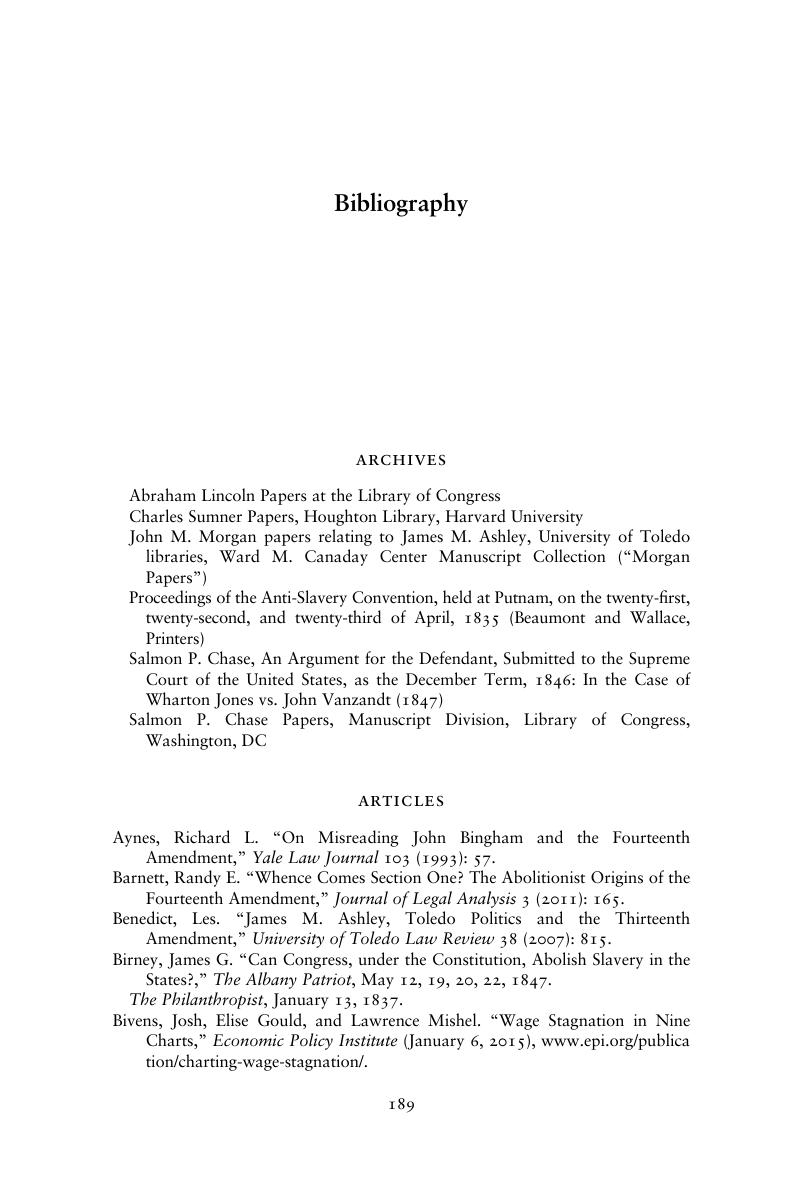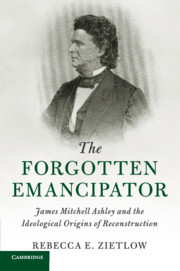Book contents
- The Forgotten Emancipator
- Cambridge Historical Studies in American Law and Society
- The Forgotten Emancipator
- Copyright page
- Dedication
- Contents
- Acknowledgments
- Prologue
- 1 James Ashley, the Forgotten Emancipator
- 2 Antislavery Constitutionalism and the Meaning of Freedom
- 3 Free Labor and Wage Slavery
- 4 Ashley’s Egalitarian Free Labor Vision
- 5 Ashley in Congress, 1859–1863
- 6 The Thirteenth Amendment and a New Republic
- 7 Enforcing the Thirteenth Amendment
- 8 After Congress
- Epilogue
- Bibliography
- Index
- References
Bibliography
Published online by Cambridge University Press: 27 October 2017
- The Forgotten Emancipator
- Cambridge Historical Studies in American Law and Society
- The Forgotten Emancipator
- Copyright page
- Dedication
- Contents
- Acknowledgments
- Prologue
- 1 James Ashley, the Forgotten Emancipator
- 2 Antislavery Constitutionalism and the Meaning of Freedom
- 3 Free Labor and Wage Slavery
- 4 Ashley’s Egalitarian Free Labor Vision
- 5 Ashley in Congress, 1859–1863
- 6 The Thirteenth Amendment and a New Republic
- 7 Enforcing the Thirteenth Amendment
- 8 After Congress
- Epilogue
- Bibliography
- Index
- References
Summary

- Type
- Chapter
- Information
- The Forgotten EmancipatorJames Mitchell Ashley and the Ideological Origins of Reconstruction, pp. 178 - 188Publisher: Cambridge University PressPrint publication year: 2017



